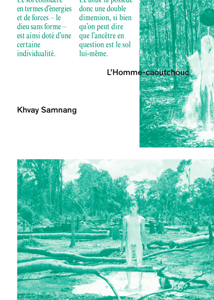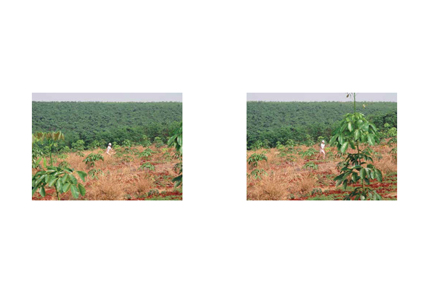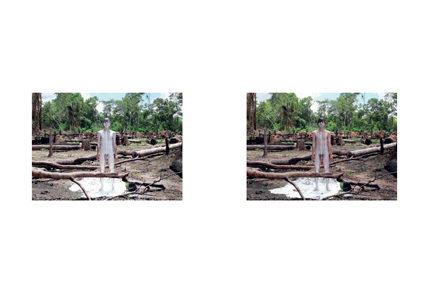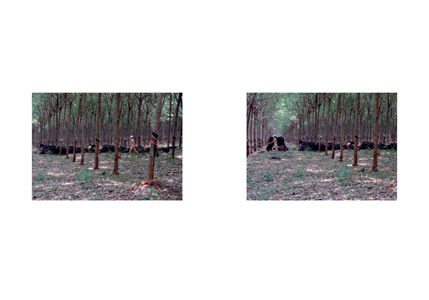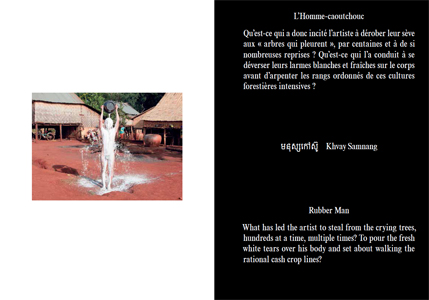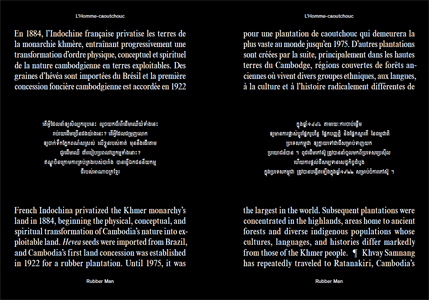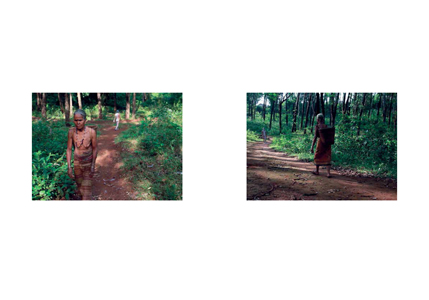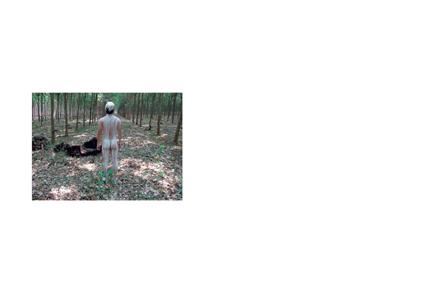With Rubber Man (2015), Khvay responds to the colonial legacy of land use and its effects on Cambodia's indigenous forests and culture today.
French Indochina privatized the Khmer monarchy's land in 1884, and soon after hevea seeds arrived from Brazil. Rubber plantations have since been concentrated in the highlands, areas home to diverse indigenous populations who entrust resident forest and ancestor spirits in an elaborate subsistence cycle of planting, transplanting, harvesting, and regeneration—practices that have effectively ensured forest and wildlife conservation for centuries.
Rubber Man is set in Ratanakiri, Cambodia's northeastern highland province, an area increasingly known in local and international news for deforestation, land grabs and protests. Khvay's three-channel video installation confronts this contested landscape with poetic resistance. As the ancient forests and communal lands are lost to private cash crops, Khvay asks, where will the spirits live?
Published on the occasion of the eponymous exhibitions at the Jeu de Paume, Paris, June 2 to September 27, 2015, and at the CAPC musée d'art contemporain de Bordeaux, September 17, 2015 to January 3, 2016.
The Jeu de Paume's Satellite program devoted to contemporary art was initiated in 2007. In 2015, the Jeu de Paume and the CAPC musée d'art contemporain de Bordeaux are jointly organizing the eighth in this series of exhibitions, which from the outset have been entrusted to curators of international renown (Fabienne Fulchéri, María Inés Rodríguez, Elena Filipovic,
Raimundas Malašauskas, Filipa Oliveira,
Mathieu Copeland and Nataša Petrešin-Bachelez). The latest series, called “Enter the Stream at the Turn” and curated by Erin Gleeson, highlights select practices in Southeast Asia through four solo exhibitions featuring the artists
Vandy Rattana (Cambodia),
Arin Rungjang (Thailand), Khvay Samnang (Cambodia) and
Nguyen Trinh Thi (Vietnam). Their channels of resistance involve the moving image realized both within and against a complex inheritance of cultural and historical occupation and censorship. Each exhibition is accompanied by a publication that was conceived as a carte blanche for the artists. This series of books, each of which was created in close collaboration with a graphic design agency, forms an independent artistic space within the Satellite program.
Khvay Samnang was born in 1982 in Svay Rieng, Cambodia, and lives and works in Phnom Penh. His multidisciplinary practice spans performance, photography, video, installation, and sculpture.
Prompted by instinct and hearsay, direct experience and media sources, Khvay follows stories he believes require intervention. With symbolic and intentionally futile gestures, he offers new interpretations of history and contentious current affairs that resist the polarizing language known to media and legal reports.
Khvay's exhibitions include “The Khmer Rouge and the consequences. Documentation as artistic memory work,” Akademie der Künste, Berlin (2015), “A Time For Dreams,” IV Moscow International Biennale for Young Art (2014), “Human Nature,” Tomio Koyama, Singapore (2014), “If The World Changed,” 4th Singapore Biennale (2014), “Everyday Life,” 4th Asian Art Biennale, Taipei Fine Art Museum (2013), “Sights and Sounds: Global Video Art,” The Jewish Museum, NYC (2013), “Phnom Penh: Rescue Archaeology,” ifa, Berlin and Stuttgart (2013), “Newspaper Man,” SA SA BASSAC, Phnom Penh (2012), and “Poetic Politic,” Kadist Art Foundation, San Francisco (2012).
In 2015, Khvay was nominated for the AIMIA | AGO Photography Prize, Canada, and Prudential Eye Awards Best Emerging Artist in Asia Using Photography, Singapore; he was a finalist for the 2015 Sovereign Asian Art Prize.



